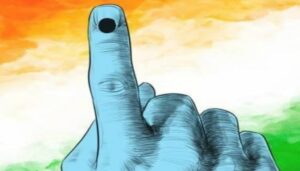India to save USD 381 million through Sustainable Ethanol Procurement System
New Delhi, July 16, 2019: India could save USD 381 Million and ensure consistent supply of ethanol while developing the indigenous industry, says the latest Report by UPES & PLR. It emphasizes on meeting the ethanol blending mandates along with the development of 2G production. The Report suggests that India needs to follow international trends very closely for a robust ethanol ecosystem, which will facilitate substantial foreign exchange savings from reduced dependence on crude as well as increased octane savings.
Key highlights of UPES-PLR Research Paper on ‘Biofuels: International Trends & Way Forward’ authored by the team of experts from UPES School of Law in collaboration with PLR Chambers
Ø 2-tier procurement system along with overall policy support to play a crucial role in achieving the set targets for India’s Ethanol Blending Program (EBP)
Ø Underlines the benefits of a robust ethanol ecosystem with adequate blending rate and estimates foreign exchange savings from the reduction of octane rating of petrol to the tune of USD 381million
Ø Analyses the production and trade of biofuels amongst 5 major jurisdictions i.e. Brazil, United States, European Union, China and India, and projects the status of achievement of ethanol blending mandate, the position of advanced biofuels and methanol. It further highlights global frontrunners such as Brazil and the United States who are major producers of 1G ethanol, indulge in international trade of 1G ethanol while accelerating their domestic production
Ø The Two-tier procurement system offers a viable solution.
v An initial ethanol tender on a quarterly basis can be issued by a OMCs at pre-determined price for domestic ethanol
v When the tender is closed for domestic ethanol, a second tender can be issued for import of lower grade of ethanol from the international marketplace at a price equal/lower than the price offered to the domestic industry
Mr. Suhaan Mukerji, Founding Partner, PLR Chambers highlighting the benefits accrued to Philippines by the implementation of a 2-tier ethanol procurement policy commented, “A consistent supply of ethanol while developing the indigenous industry, to meet blending mandates as well as development in 2G production, considering the prices of biofuels is what the Two-tier procurement policy seeks to achieve. For a robust ethanol ecosystem, India needs to follow international trends very closely”.
As per the Report, in terms of economic feasibility, there are various issues related to the pricing of ethanol suppliers and OMCs. Sugar mills are riddled with debt to the tune of INR 16520.63 crores owed to farmers and creditors. Competing industries restrict the supply of ethanol for blending while inconsistency in supply creates a situation of flux for sugar mills, farmers and OMCs alike.
“The draft National Energy Policy (NEP) advocates for framing up of a Bioenergy Policy that shall encompass all forms of biomass-based energy. This includes focus on augmenting the supply of ethanol through second generation technologies in addition to the present strategy of promoting ethanol and biodiesel admixtures in liquid transport fuels in an effort towards curbing country’s oil import. It may be noted that Government of India has revisited the National Policy on Biofuels in 2018. While the efforts in this direction is laudable, there is a need for a focused approach to ensure that the blending target is met,” said Dr. Vijay Kumar Singh, Professor and Officiating Dean, UPES School of Law.
“This will facilitate foreign exchange savings, environmental benefits, and additional benefits through farmers by helping sugar mills clear their debt,” he further added.
For the current fiscal, it is estimated that crude oil imports would rise to 233 million tonnes and foreign exchange spending on it would be would go up to USD 112.7 billion.
On the basis of the global trend of biofuels, the Report also highlights that 2G ethanol is still in the nascent stage of development and as of today, the commercial viability and technological success of 2G ethanol are still unproven. With 2G still in the experimental stages, it is 1G ethanol that is majorly used for blending with fuel for facilitating transports.





